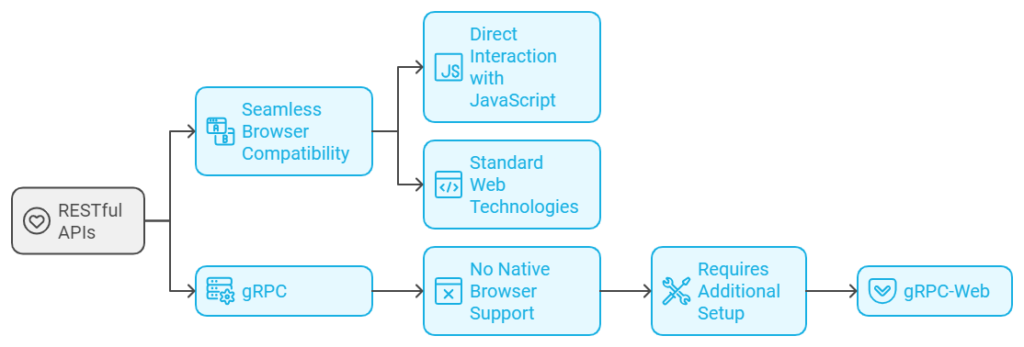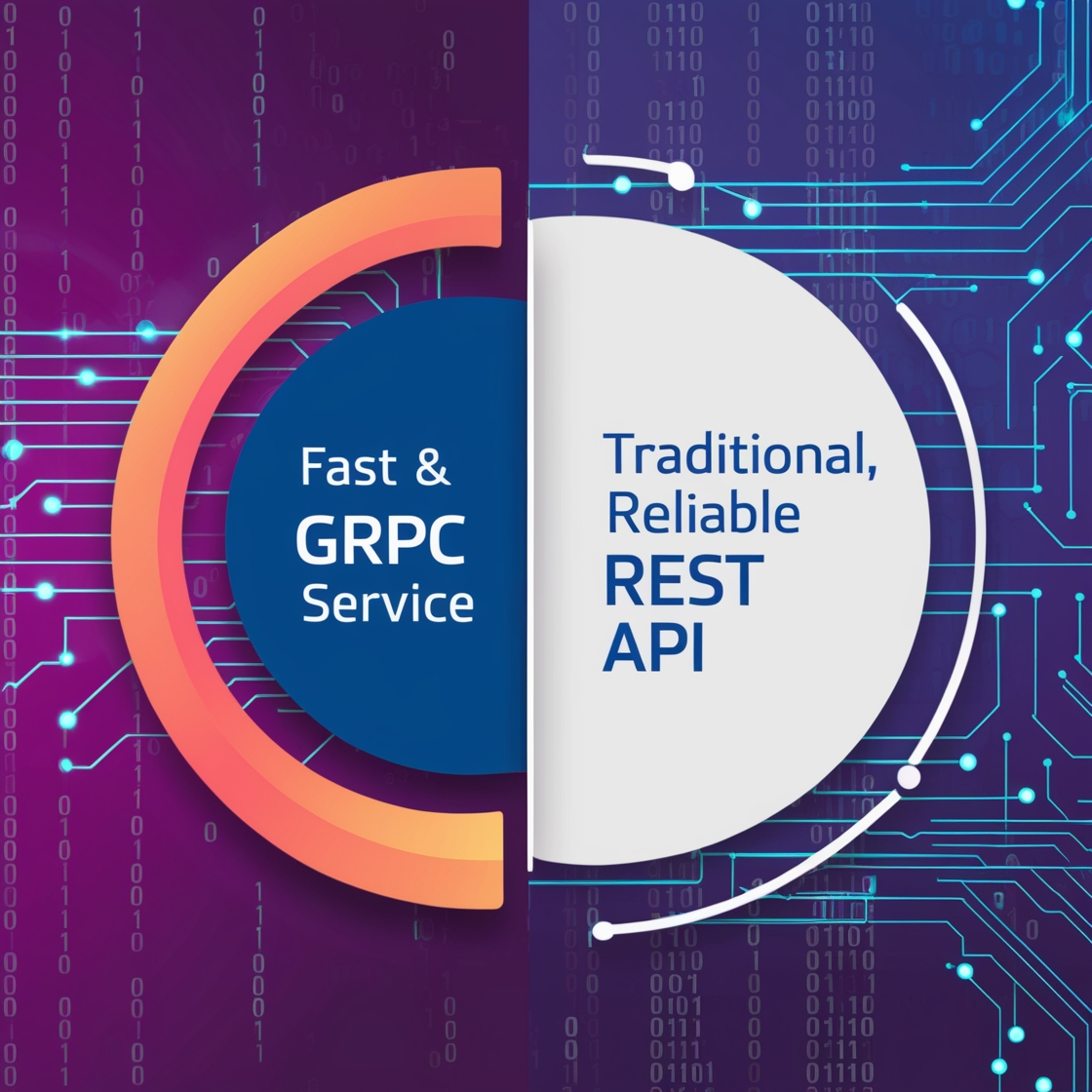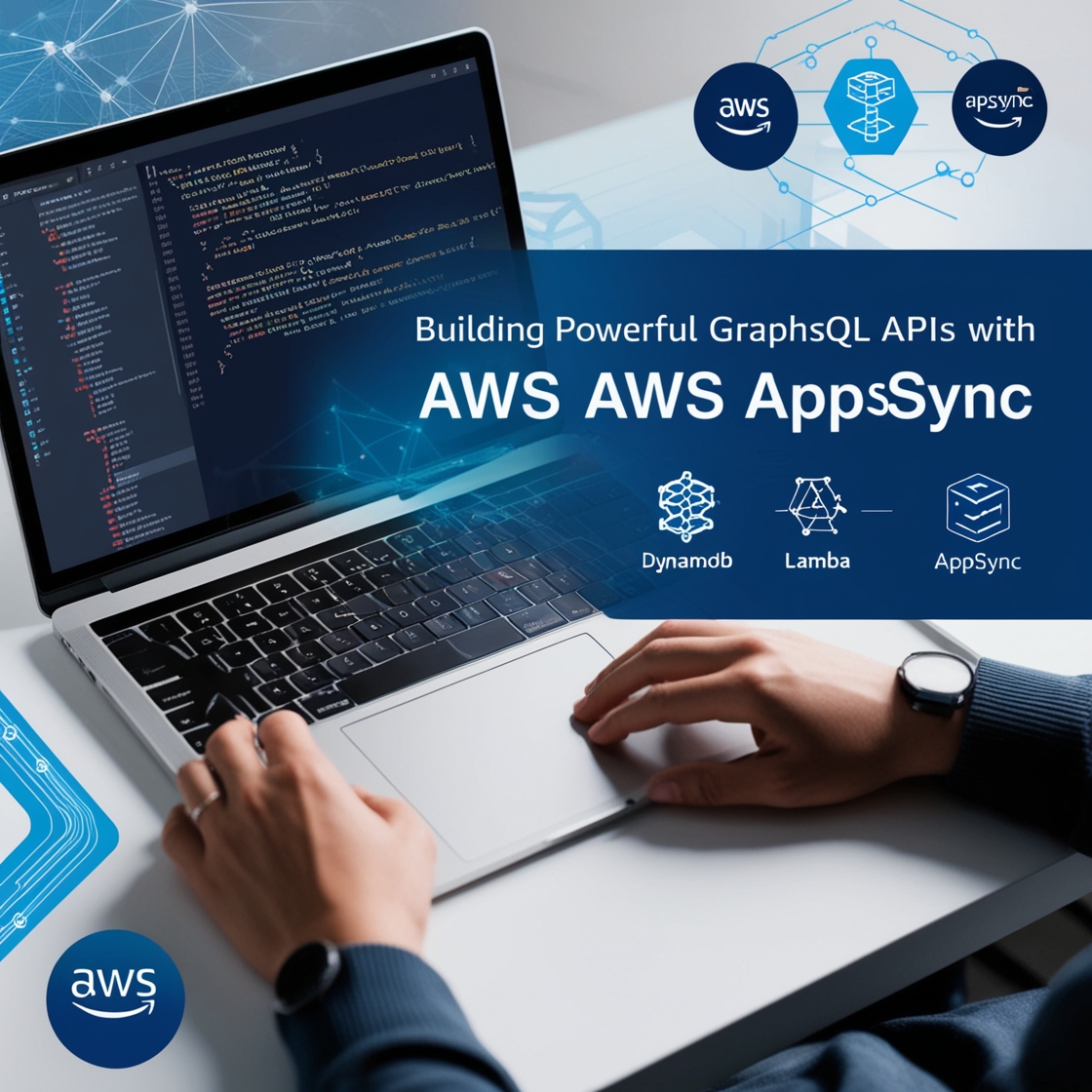As a software engineer with over a decade of experience, I’ve seen my fair share of API architectures come and go. But two contenders have consistently stood out in recent years: gRPC and REST. In this blog post, we’ll dive deep into the world of these API giants gRPC vs REST, exploring their strengths, weaknesses, and when to use each. Buckle up, fellow devs – it’s going to be an exciting ride! 🎢
What’s the Deal with gRPC vs REST? 🤔
Before we jump into the nitty-gritty, let’s quickly define our contenders:
- REST (Representational State Transfer): The tried-and-true architectural style that’s been dominating web services for years. It’s like the reliable old friend you can always count on.
- gRPC (gRPC Remote Procedure Call): The new kid on the block, developed by Google. It’s like that cool, efficient robot from the future that promises to make everything faster and smoother.

Now, let’s break down the key differences and see how they stack up against each other.
Performance: The Need for Speed ⚡
When it comes to performance, gRPC takes the cake 🍰. Thanks to its use of Protocol Buffers (protobuf) and HTTP/2, gRPC is generally faster and more efficient than REST.

Example time! Imagine you’re building a real-time chat application:
# gRPC example (pseudo-code)
def send_message(message):
return grpc_client.SendMessage(ChatMessage(text=message))
# REST example (pseudo-code)
def send_message(message):
return requests.post('/api/messages', json={'text': message})
In this scenario, gRPC would typically outperform REST, especially when dealing with a high volume of messages. The binary protocol and multiplexing capabilities of HTTP/2 make gRPC a speed demon 😈.
Ease of Use: Developer-Friendly or Not? 🛠️
REST has been around the block a few times, which means there’s a ton of tooling and good understanding among developers. It’s like speaking English – almost everyone in the tech world gets it.
gRPC, on the other hand, has a steeper learning curve. It’s like learning Esperanto – potentially more efficient, but fewer people speak it fluently.
// REST example - Easy to understand
fetch('/api/users/123')
.then(response => response.json())
.then(user => console.log(user));
// gRPC example - More setup required
const client = new UserServiceClient('localhost:50051');
const request = new GetUserRequest();
request.setId(123);
client.getUser(request, (error, user) => {
if (!error) console.log(user.toObject());
});Flexibility: Adapting to Change 🐙
REST shines when it comes to flexibility. Its loose coupling between client and server means you can evolve your API without breaking existing clients. It’s like a chameleon 🦎, adapting to its environment with ease.
gRPC is more rigid. Changes to your protobuf definitions can potentially break clients. It’s like a well-oiled machine – efficient, but less forgiving when you try to swap out parts.

Browser Support: Playing Nice with Web Browsers
Here’s where REST takes a good lead. RESTful APIs are the darlings of web browsers, it works seamlessly with JavaScript and other web technologies.
gRPC, unfortunately, doesn’t play as nice as REST with browsers out of the box. While there are workarounds like gRPC-Web, it’s not as straightforward as REST.

<!-- REST is a breeze in browsers -->
<script>
fetch('https://api.example.com/users')
.then(response => response.json())
.then(data => console.log(data));
</script>
<!-- gRPC requires additional setup and libraries -->
<!-- Requires gRPC-Web and setup on the server side -->Use Cases: Choosing the Right Tool for the Job 🔧
- Choose REST when:
- You’re building public APIs 🌍
- Browser support is crucial 💻
- You need maximum flexibility 🤸♀️
- Go with gRPC for:
- Microservices architecture 🏗️
- Performance-critical systems ⚡
- Streaming data scenarios 🌊

Real-World Example: A Tale of Two Services 📚
Let’s say we’re building a book recommendation service. Here’s how it might look with both approaches:
# REST API
@app.route('/recommendations/<user_id>')
def get_recommendations(user_id):
# Logic to fetch recommendations
return jsonify(recommendations)
# gRPC Service
class RecommendationService(recommendations_pb2_grpc.RecommendationServiceServicer):
def GetRecommendations(self, request, context):
# Logic to fetch recommendations
return recommendations_pb2.RecommendationResponse(books=recommendations)The REST API is simpler to set up and understand, while the gRPC service would be more efficient for high-volume requests or when streaming updates.
The Verdict: It’s Not One-Size-Fits-All 🏆
Choosing between gRPC and REST isn’t about picking a winner – it’s about selecting the right tool for your specific needs. Both have their strengths, and many projects even use them side by side!
Remember, the best API is the one that solves your problem efficiently and keeps your developers (and users) happy. So choose wisely, and may your APIs be ever scalable! 🚀

Okay, now it’s time to answer some burning questions.
FAQ: Your Burning Questions Answered 🔥
What’s the main difference between gRPC and REST?
The main difference lies in their underlying protocols and data formats. REST typically uses HTTP/1.1 and JSON, while gRPC uses HTTP/2 and Protocol Buffers. This makes gRPC generally faster and more efficient, especially for high-volume or streaming data scenarios.
Is gRPC always faster than REST?
While gRPC is generally faster, it’s not always the case. For simple, low-volume requests, the difference may be negligible. REST can still perform well when properly optimized.
Can I use gRPC in web browsers?
Direct gRPC support in browsers is limited. However, you can use gRPC-Web, a JavaScript implementation of gRPC for browser clients. It requires additional setup and may not have all the features of native gRPC.
Is it possible to use both gRPC and REST in the same project?
Absolutely! Many projects use both, leveraging gRPC for internal microservices communication and REST for public-facing APIs. This approach combines the performance benefits of gRPC with the wide compatibility of REST.
Remember, the world of APIs is constantly evolving, so keep learning and experimenting! For more in-depth information, check out the official gRPC documentation and REST API tutorial. Happy coding! 👨💻👩💻
Next: Transform Your Applications with AWS EventBridge: Unlock Seamless, Real-Time Integration








1 thought on “gRPC vs REST: The #1 Thing You Need to Know for Lightning-Fast APIs”